Art
Bus artist
Denise Poole is "artist in residence" on the Bournemouth city buses. As she moves around the city, she sketches what she sees. Not a series of sketches, mind you. A day's journey results in one sketch. If it looks like a bunch of squiggly lines on paper to you, then perhaps you're a philistine who can't appreciate art. [BBC News Dorset]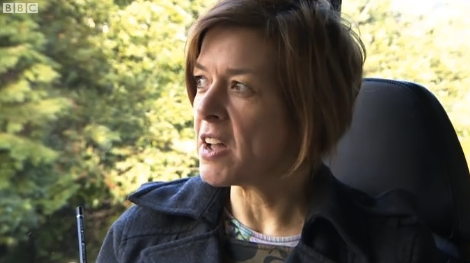
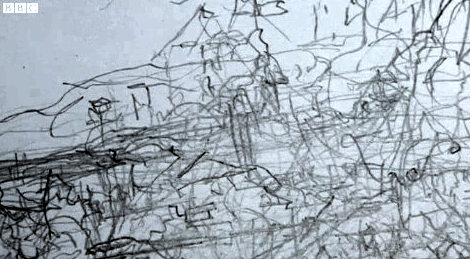
Posted By: Alex - Wed Jan 29, 2014 -
Comments (7)
Category: Art, Transportation
Upside-Down House
British artist Alex Chinneck does strange things with buildings. His latest project involved flipping a London building upside-down so that the front door is now at the top. (He didn't actually turn it upside-down. He attached a brick veneer to the outside to make it look that way.)
In an earlier project, a building's brick veneer appears to be sliding off the house.

Posted By: Alex - Sat Jan 18, 2014 -
Comments (9)
Category: Architecture, Art
Best Xmas Card 2013
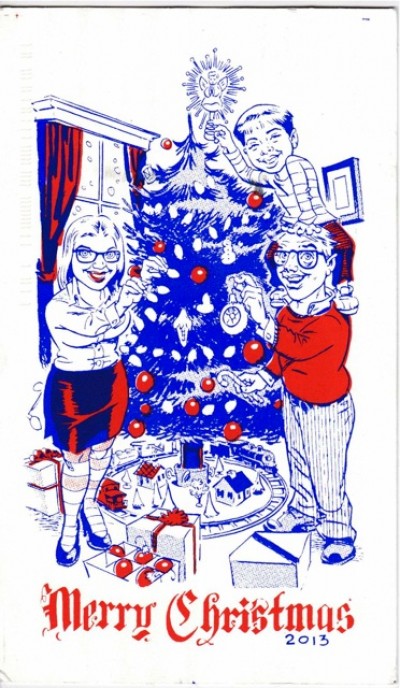
Now that the season is officially over, I can state with certainty that the best card I received this year was from WU's own Rick Altergott, depicting the artist, his charming and beautiful wife Ariel, and their son Eddie.
Happy New Year to all!
Posted By: Paul - Wed Jan 01, 2014 -
Comments (4)
Category: Art, Holidays, Weird Universe
Giant foot on wheels
Rolled through the streets of Stockholm in 1966 to advertise an art exhibit. Source: The Toledo Blade - Oct 3, 1966.
Posted By: Alex - Sun Dec 29, 2013 -
Comments (6)
Category: Art, 1960s
The Tattoo Hall of Fame
Back in June 2012, I posted about a guy down in Australia, Geoff Ostling, who hopes to have his tattooed skin hung on a gallery wall as art after he dies. I got the impression that Mr. Ostling thought his idea of displaying tattoo art postmortem was something new, but it turns out there already is a decades-old tattoo hall of fame.The April 3, 1950 issue of Life magazine included an article about Dr. Sei-ichi Fukushi, curator of the Imperial University of Tokyo's collection of tattooed human skins. As of 1950, he had already acquired 38 human skins which were on display in the University's gallery, and Dr. Fukushi was eager to expand the collection.

Posted By: Alex - Tue Dec 03, 2013 -
Comments (5)
Category: Art, 1950s, Tattoos, Skin and Skin Conditions
Metro the Painting Horse
Read more about Metro at NPR.
Posted By: Alex - Thu Nov 28, 2013 -
Comments (4)
Category: Animals, Art
It felt like i knew you
I'll let artist George Ferrandi describe her ongoing "project" in her own words:I'm guessing that guys who grope women's buttocks on crowded trains probably go through the same kind of mental wind-up.
Anyway, Ferrandi has a friend sitting opposite record the results of her space re-shaping.
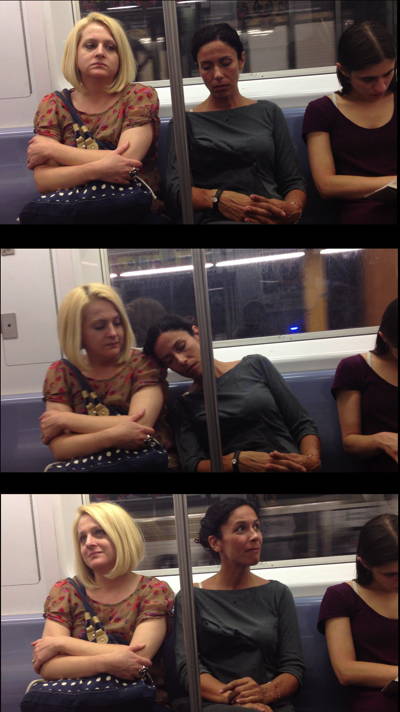
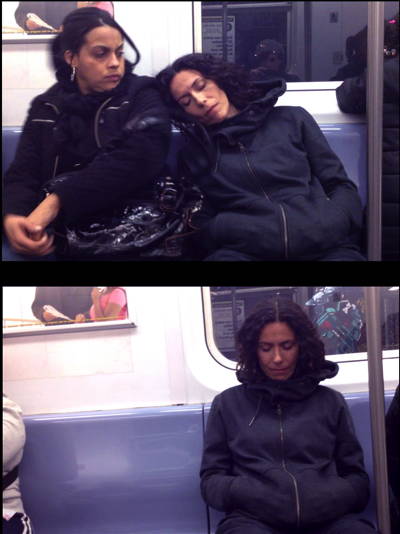
Posted By: Alex - Tue Nov 26, 2013 -
Comments (5)
Category: Art
Beautify your home—guaranteed!
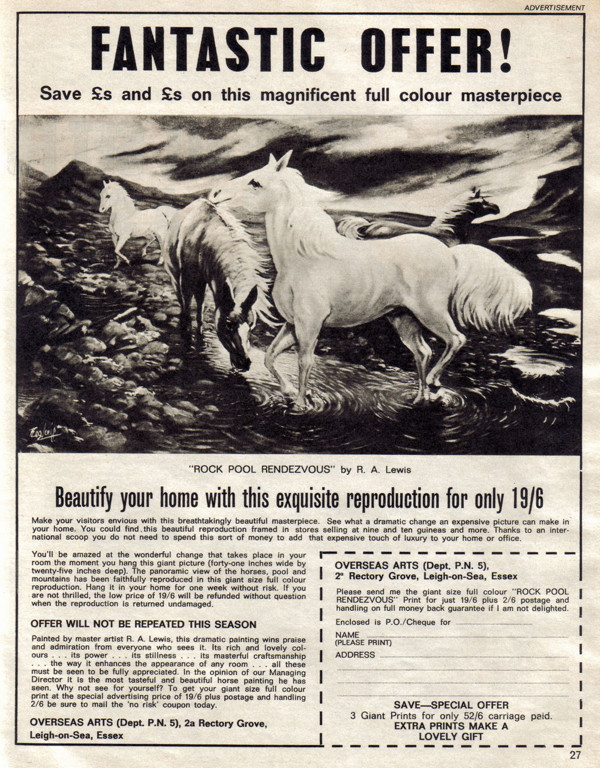
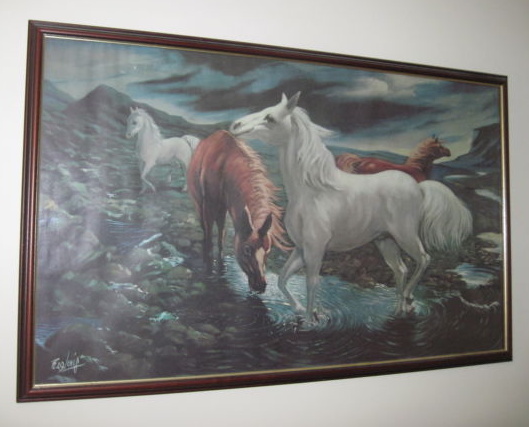
1968 advertisement via Curious Objects.
Posted By: Alex - Sun Nov 17, 2013 -
Comments (4)
Category: Art
Samuel Rowlett, the Peripatetic Artist

Sounds like Rowlett should team up with the "walking artist" Hamish Fulton. They'd make quite a pair.
And the same Gallerist NY article contains another nugget of weirdness:
I spent quite a few years pursuing a PhD that I never completed. If I had known there was the option of getting a PhD in Walking, that would have changed everything.
Posted By: Alex - Thu Nov 07, 2013 -
Comments (7)
Category: Art
Typewriter Art
Keira Rathbone creates elaborate drawings using an old 1960s typewriter. I guess someone must still manufacture ribbons for those things. She says she mostly uses dashes, slashes, and brackets. Letters are more useful for shading. You can check out more of her work at her website.
Posted By: Alex - Fri Nov 01, 2013 -
Comments (16)
Category: Art

| Who We Are |
|---|
| Alex Boese Alex is the creator and curator of the Museum of Hoaxes. He's also the author of various weird, non-fiction, science-themed books such as Elephants on Acid and Psychedelic Apes. Paul Di Filippo Paul has been paid to put weird ideas into fictional form for over thirty years, in his career as a noted science fiction writer. He has recently begun blogging on many curious topics with three fellow writers at The Inferior 4+1. Contact Us |




